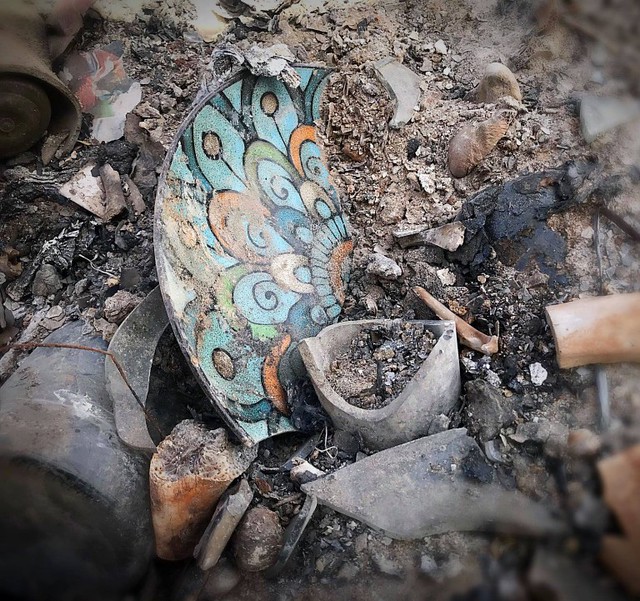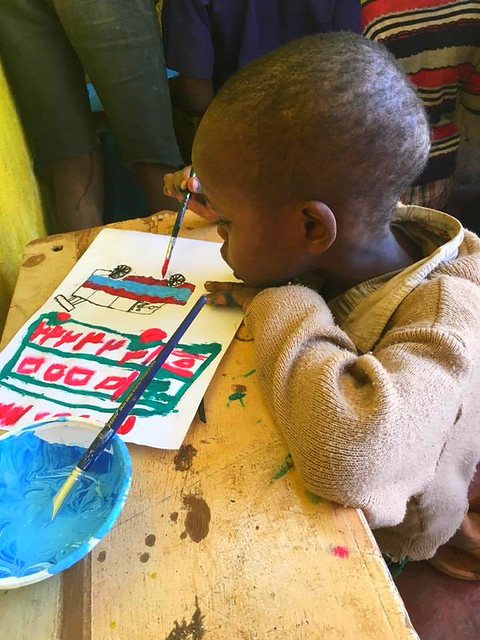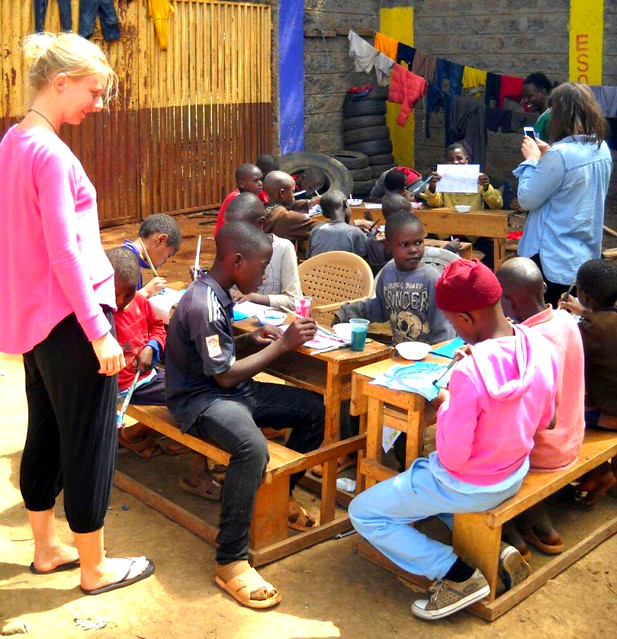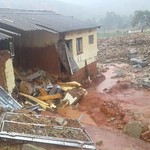Bringing art and beauty to Kenyas trash heaps
By Zoë Cromwell | Kenya in East Africa

What business does a group of artists have, visiting a huge rubbish dump in Nairobi, sitting in tiny shacks with the trash sorters, and bringing art materials to their kids?
The recent Art Residency in Kenya – the first time SIM International Arts has done something like this – was first and foremost to bring Christian artists from overseas together with Kenyan artists to learn about being mission partners as creative people.
Probably not many mission offices are actively recruiting artists, yet of course our creative God can use the people he has gifted with skill in the arts to make disciples, just as he can use those of other professions. The arts are attractive to many people; God employs them to open hearts and doors.
The Art Residency created a space for us to forge new connections. We partnered with a local SIM ministry, Children at Risk, which helped us tap into a growing network of rescue homes, orphanages, and projects for street kids.
So, the event was no ivory-tower experience but kept bringing artists back to hands-on involvement in mission contexts: a slum, a children’s rescue home, a prison. The residency served as an intensive catalyst that created friendships and mentoring relationships between Kenyan and overseas artists that have continued beyond the event itself. Two of the interns are committed to serving long-term in mission; others are getting together regularly to continue the residency momentum.
We also felt humbled to see God working through this residency to attract people from outside our original team of interns. Hezron, a Christian artist, watched us from the other end of the shared studio space as he painted until I struck up a conversation.
He got straight to the point: “Please tell me,” he asked, “how I can become a missionary using my art.”
There's Marie-Ange, the wife of an African pastor we met on a field trip. We invited her to join us, and she is blossoming as she develops her flair for art.
 Marie-Ange and her husband were already working with vulnerable children, but this connection has made them more effective because of new contacts that grew from the residency.
Marie-Ange and her husband were already working with vulnerable children, but this connection has made them more effective because of new contacts that grew from the residency.
Ian is a child rescued from the streets. He and another boy joined us on the first day because they had shown aptitude for art. The other boy soon disappeared back to the streets — Ian stuck with us, receiving help and care from two mentors in our group. He’s now attending school, studying art in formal lessons and his social worker sees him as a role model to other boys.
Then there’s Frank, who we met in a Nairobi prison because some of our artists were invited to share the message at their compulsory Sunday worship service.
Frank was one of 39 young men who filed out at the end wanting to accept Christ. He is keen on creative arts, and since his release, he is being discipled by artists from the residency.
Byron Spradlin of ACT (Artists in Christian Testimony) describes artists as those who understand emotional and imaginative intellect along with logical intellect.
He says, “This is important if we are to understand being made in the image of God. As people in mission we need emotional, creative and rational intellect — all three. We have to be operating on all pistons as we move forward, for the sake of declaring his glory who called us out of darkness into his glorious light.”
If you have art skills you think God could use in overseas ministry, contact SIM today!
Related stories

Uruguay immigrants are putting down New Roots Duplicate 1
Uruguay has a large immigrant population, and students from the vocational programme at the Biblical Seminary of Uruguay, a partner of SIM, realised many foreigners were finding it difficult to adjust to their new home. New Roots ministry was formed to assist these newcomers!
Zimbabwe new stories 2 only en-gb
Short Summary
Zimbabwe new stories
short summary

